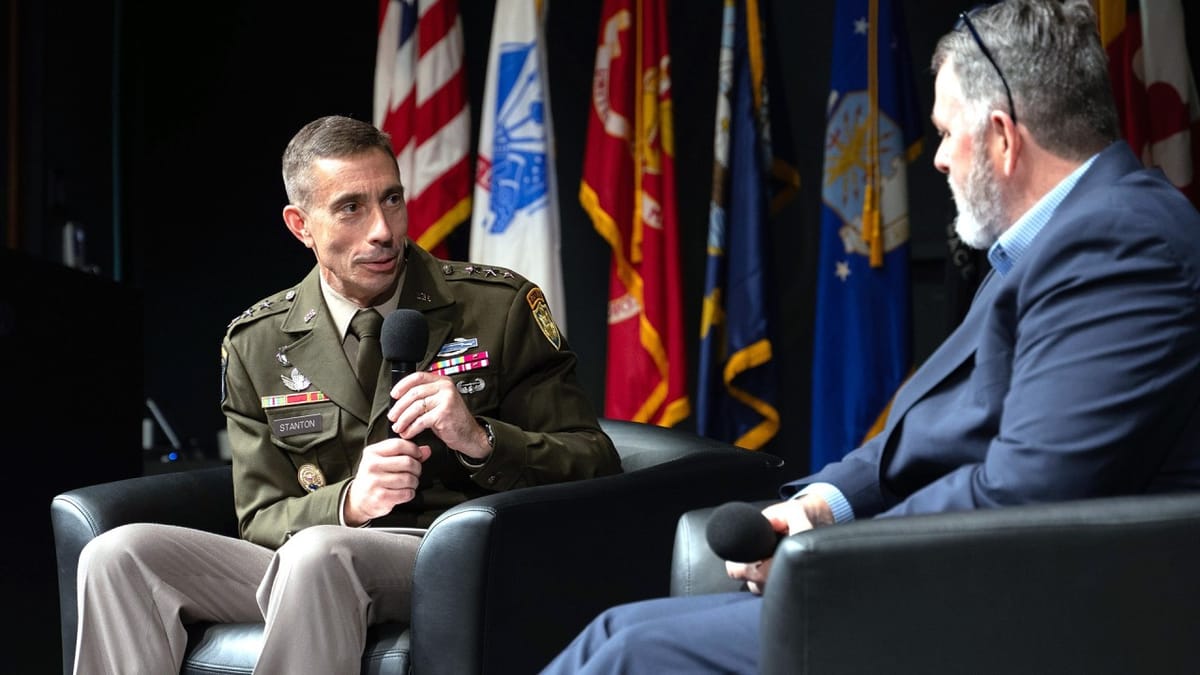The Wartime Fighter Mindset in Cybersecurity: Lt. Gen. Paul Stanton's Strategic Vision

Lt. Gen. Paul T. Stanton, Director of the Defense Information Systems Agency (DISA) and Commander of the Department of Defense Cyber Defense Command, has articulated a transformative approach to cybersecurity that fundamentally reframes how organizations should think about digital defense. His concept of the "wartime fighter mindset" represents a strategic shift from reactive cybersecurity practices to proactive, mission-focused cyber operations that treat the digital domain as an active battlefield.
From Reactive Defense to Proactive Warfare
Stanton has urged cyber professionals to shift from a reactive cyber incident response to a proactive mindset to better protect the Department of Defense Information Network from adversaries. This represents a fundamental departure from traditional cybersecurity approaches that focus primarily on incident response and remediation.

The wartime fighter mindset rejects the conventional approach of "chasing incidents" in favor of strategic thinking. As Stanton explained in his HammerCon 2025 address: "Don't randomly chase incidents. Don't chase events. Think in context. Think about what the enemy is attempting to accomplish. Think about what missions are relevant to us. Think about where our missions and the enemy's intent and capabilities overlap, and in the center of that Venn diagram, build your engagement area, and then beat the enemy."
Core Principles of the Wartime Fighter Mindset
Mission-Centric Defense Strategy
The wartime fighter mindset prioritizes mission objectives over comprehensive perimeter defense. Stanton stressed the importance of applying warfighting principles to cyber defense, prioritizing missions, identifying enemy intent, and focusing resources on defending what matters most, noting that "attempting to defend everything effectively defends nothing, because you spread yourself too thin."
This approach requires CISOs to fundamentally reassess their defensive strategies, moving away from trying to secure every asset equally and instead focusing resources on protecting mission-critical systems and data that directly support organizational objectives.
Data as Strategic Ammunition
Stanton indicated that successful cyber warfare hinges on access to timely and accurate data, stating that "getting the right data to the right place at the right time to make a better and faster decision than the enemy is central to how we fight." He draws a direct parallel between data in cyber operations and fuel in armored warfare, emphasizing that just as tanks are useless without fuel, digital operations cannot succeed without proper data flow.
However, this comes with strategic considerations about data transmission security. Stanton cautioned that data transmission can expose warfighters to enemy electronic warfare capabilities, warning that "if you're continuously pushing data, you're not going to survive long."
Network Infrastructure as Weapon Systems
A key tenet of the wartime fighter mindset is viewing network infrastructure not as passive IT assets but as active weapon systems. Stanton declared that the network used to move data is a weapon system that requires rigorous training and understanding. This perspective transforms how organizations approach network security, operations, and training.
Using DISA's zero-trust architecture "Thunderdome" as an example, Stanton emphasized that "if we're not trained and ready to use it, it's not effective," noting the complexity of properly configuring zero-trust environments and warning against "wrapping yourself in a false blanket of confidence that you have security" without proper understanding.

Strategic Implementation for CISOs
Campaigning Against Vulnerabilities
The wartime fighter mindset advocates for coordinated, campaign-style responses to cyber threats rather than isolated defensive actions. Stanton encouraged "a campaigning approach to cyber defense, advocating for coordinated action against technological vulnerabilities and threat actors," stating that "we need to campaign when we have a technological weakness in the DODIN. The execution against the enemy that's attacking that vulnerability needs to be coordinated."

For CISOs, this means developing systematic approaches to vulnerability management that treat threat remediation as coordinated campaigns rather than individual incidents.
Persistent Competition Mindset
The Defense Department can no longer assume technological superiority over its adversaries and instead must prepare for persistent competition in the cyber domain. This reality requires CISOs to adopt what military strategists call "persistent engagement"—the understanding that cyber operations occur continuously rather than during discrete conflict periods.
Technical Competence with Values-Based Execution
Stanton explained that cyber as a profession is a combination of technical competency and the application of values, stating "You have your technical capabilities and then you apply, allocate and execute them through values." This framework provides CISOs with a model for building cyber teams that combine deep technical skills with strong ethical foundations and mission focus.
Organizational Transformation Requirements
Training Integration
Stanton recommended integrating cyber awareness into all aspects of military training, citing the Army's partnership with the Maneuver Center of Excellence to introduce electronic warfare capabilities into infantry training. For civilian organizations, this translates to embedding cybersecurity considerations into all business operations rather than treating it as a separate function.

Communication and Mission Alignment
The wartime fighter mindset requires cyber professionals to effectively communicate their domain's importance to broader organizational leadership. Stanton challenged cyber professionals to use simple, relatable terms, stating "If you don't get gas, you don't move. If you don't have data, then you can't call for fire."

Strategic Context and Future Implications
Stanton highlighted the need to view cybersecurity through a warfighting lens and stressed that cybersecurity is not about reacting to random incidents, but anticipating the moves of adversaries and imposing costs on them. This represents a maturation of cybersecurity from a defensive discipline to an active component of organizational strategy.
The wartime fighter mindset acknowledges the reality of modern cyber threats where defense leaders can no longer assume technological superiority and must prepare for persistent competition in the cyber domain. This requires CISOs to fundamentally rethink their role from protecting against attacks to actively engaging in continuous cyber operations.

Conclusion
Lt. Gen. Stanton's wartime fighter mindset represents a paradigm shift in cybersecurity thinking that moves beyond traditional defensive postures to embrace proactive, mission-focused cyber operations. For CISOs, adopting this mindset means transforming cybersecurity from a compliance-driven function into a strategic enabler of organizational mission success.
The framework emphasizes the importance of understanding adversary intent, prioritizing mission-critical assets, treating networks as weapon systems, and maintaining continuous operational readiness. As cyber threats continue to evolve and intensify, the wartime fighter mindset provides a proven military framework for building resilient, effective cybersecurity programs that can operate successfully in contested digital environments.

This approach demands not just technical excellence but strategic thinking, coordinated operations, and the ability to make rapid decisions under pressure—skills that will become increasingly critical as cyber operations continue to merge with broader organizational strategy and national security considerations.












